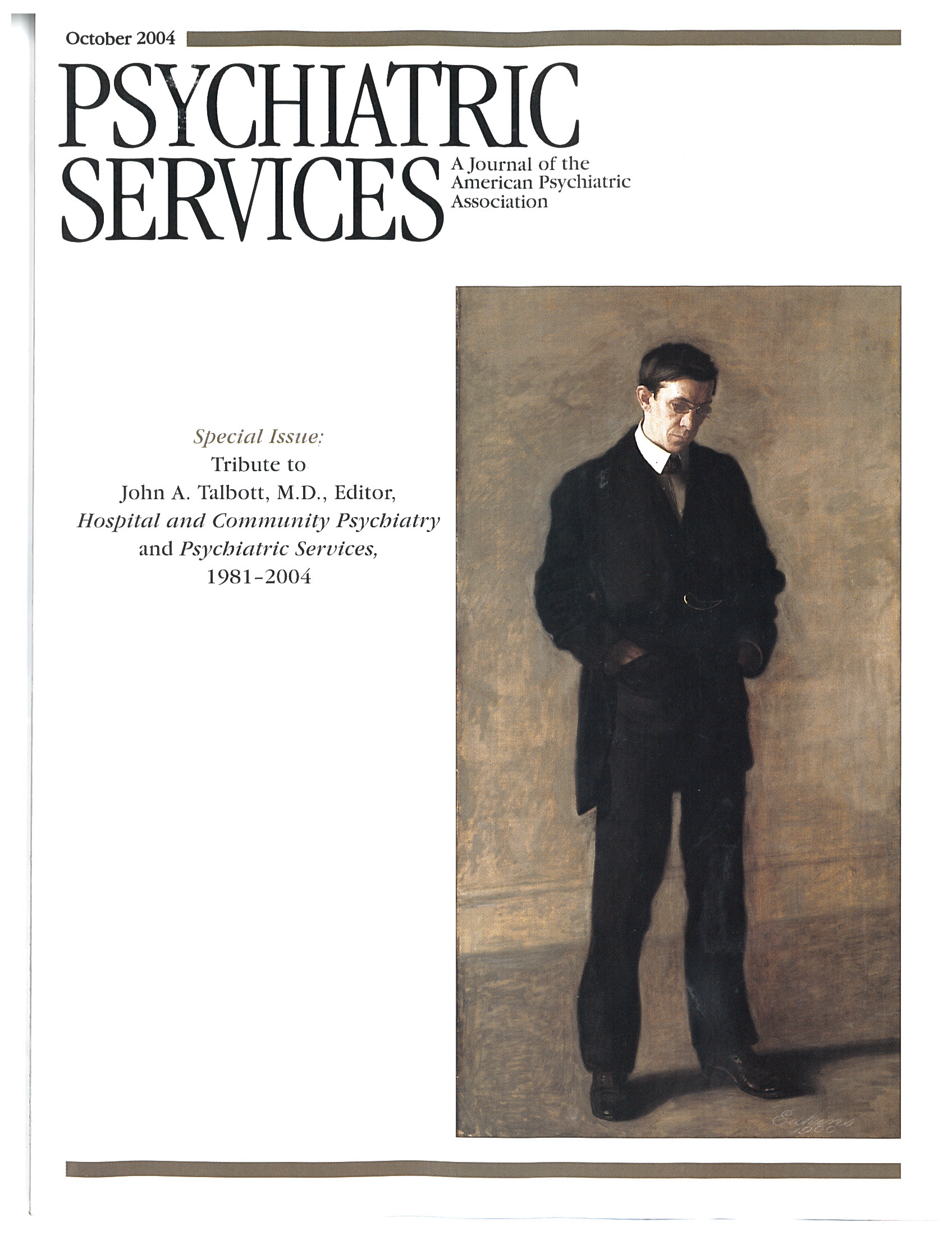The Chronic Mental Patient: Problems, Solutions, and Recommendations for a Public Policy: Prepared by the Ad Hoc Committee on the Chronic Mental Patient
The advent of psychopharmacologic drugs in 1955 resulted in the release of thousands of long-stay patients from public mental hospitals into communities that were unprepared to meet their needs. In 1975, the New York County District Branch of the American Psychiatric Association (APA) sent an action paper titled "The Chronic Mental Patient: A Silent Majority" to the APA Assembly, which was forwarded to the Board of Trustees. APA President John Spiegel (1974 to 1975) had also become aware of psychiatrists' concern about the problems of these patients. Spiegel proposed that APA sponsor a conference on the chronic mental patient, and President Carter's Commission on Mental Health agreed to be a cosponsor.
John A. Talbott, M.D., who had been a director of a large urban mental hospital, accepted chairmanship of the newly formed ad hoc committee on the chronic mental patient. The committee surveyed the APA membership and on the basis of the 156 replies formulated seven key topics a conference should address: Who are the mental patients? What programs do or do not work to meet their needs? What are the obstacles and solutions? What are the economic issues? What are the pros and cons of case management? Who should be responsible for coordinating, implementing, and monitoring services? How does the right to privacy clash with the need for information exchange?
The conference was held in Washington, D.C., in January 1978. Eighty participants were invited, representing the mental health and legal professions as well as governmental and nongovernmental organizations and including an ex-long-stay mental hospital patient. The participants were divided into groups of ten, which rotated through the various topics. Position papers had been prepared in advance, and the discussions were recorded, with both forming the basis for the conference report presented in the book, which also contains a basic bibliography.
The APA board of trustees and Assembly, on receiving the conference report, issued a position statement titled "A Call to Action for the Chronic Mental Patient," which adopted the conference recommendations and set forth psychiatry's role and responsibilities. Psychiatric and public attention were drawn to the problem of the chronic mental patient.
Has the conference made a difference? As the state mental hospital population dropped from 550,000 in 1995 to less than 170,000 in the 1970s, changes have occurred, but problems remain, such as homelessness and jails as an alternative to hospitals. Talbott has continued to push for improved services. His leadership in linking academia and state hospitals resulted in a fruitful experiment. He has continued to draw attention to the continuing problems by publishing more than 40 papers in journals and as book chapters. The American Textbook of Psychiatry, 3rd Edition (1999), of which Talbott is an editor, mentions in the section on schizophrenia that the focus of treatment has shifted from state hospitals to outpatient clinics and the community to the benefit of patients, families, and society. Patients have more opportunity for independence, but in many places an integrated, coordinated system of care to meet patients' needs is still not available. In a chapter in a 1995 book on schizophrenia, Talbott reviewed recent significant changes, writing "it is probably neither science nor advocacy…that will shape services but economic forces."
In the conference report, Spiegel attributes to Talbott "organizational wizardry." Among those who can be credited with advancing care for chronic mental patients, Talbott will take his place.
Dr. Ozarin, who is now retired, is a former medical director of the U.S. Public Health Service.



